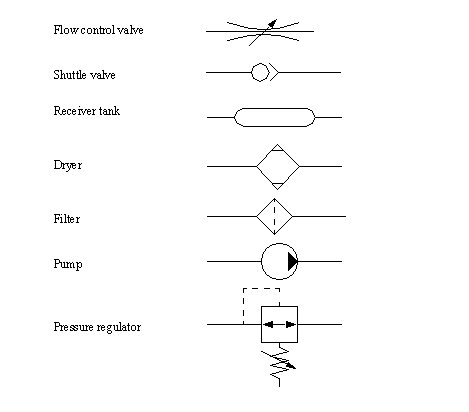11.6 PNEUMATICSPneumatic systems are very common, and have much in common with hydraulic systems with a few key differences. The reservoir is eliminated as there is no need to collect and store the air between uses in the system. Also because air is a gas it is compressible and regulators are not needed to recirculate flow. But, the compressibility also means that the systems are not as stiff or strong. Pneumatic systems respond very quickly, and are commonly used for low force applications in many locations on the factory floor. Some basic characteristics of pneumatic systems are, - stroke from a few millimeters to meters in length (longer strokes have more springiness - the actuators will give a bit - they are springy - pressures are typically up to 85psi above normal atmosphere - the weight of cylinders can be quite low - additional equipment is required for a pressurized air supply- linear and rotatory actuators are available. - dampers can be used to cushion impact at ends of cylinder travel. When designing pneumatic systems care must be taken to verify the operating location. In particular the elevation above sea level will result in a dramatically different air pressure. For example, at sea level the air pressure is about 14.7 psi, but at a height of 7,800 ft (Mexico City) the air pressure is 11.1 psi. Other operating environments, such as in submersibles, the air pressure might be higher than at sea level. Some symbols for pneumatic systems are shown in Figure 11.75 Pneumatics Components. The flow control valve is used to restrict the flow, typically to slow motions. The shuttle valve allows flow in one direction, but blocks it in the other. The receiver tank allows pressurized air to be accumulated. The dryer and filter help remove dust and moisture from the air, prolonging the life of the valves and cylinders. 
|